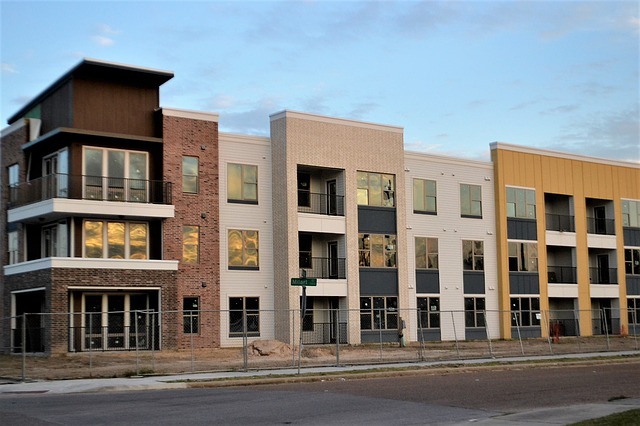

Summary
- A Federal Reserve Bank of New York paper examines the long-run returns on residential real estate in 15 countries over 150 years.
- While house prices grow faster in large cities, rental returns are as much as 1.6%pa higher in small cities. This disparity more than compensates for the capital gains difference.
- Consequently, the returns on residential real estate are higher outside of ‘superstar’ cities. And buying a property outside such cities would have earned an investor double over the last 70 years.
Introduction
In the US and UK, average house prices have risen more than 20% over the last two years. Even adjusting for inflation, that is still equivalent to around $35,000 credited to the average homeowner during the pandemic. It is undeniable – the residential real estate market has blossomed. But for long-term investors, the question must now be this: where will my investments outperform even if the market slows?
A Federal Reserve Bank of New York paper could help. It looks at annual house prices and rents in 27 superstar cities across 15 countries to find the best long-term returns. Uniquely, by breaking these returns down into capital appreciation income and rental income, the authors can identify the most important component for a property market investor.
Data and Methodology
Accessing historical housing and rental price data is a challenge. The authors use a broad range of sources, such as past academic research, city yearbooks, newspapers, tax records, notaries, archives of real estate agents, and other archival data. In some cases, they had to use hedonic regressions to construct price indices based on transaction and advertising data.
In all, they collect annual house and rental price data for 27 cities and 15 countries stretching as far back as the 1870s (Table 1). Using this data, they construct housing returns, which comprise capital appreciation and rent. Capital gains are proxied by the YoY percentage change in house prices, while rental income factors in the cost of renting, and is normalized by house prices (Equation 1).
Armed with the housing returns for each superstar city and country, the authors back out returns in the rest of the country (by subtracting superstars from the national series). This allows them to compare the house price growth and rental returns in superstar cities vs the rest of the country, helping them locate the best ROIs.
Returns in Superstar Cities
Since 1950, the sum of capital gains and net rental returns have been largest in Berlin, Paris and Amsterdam (Chart 1). Inflation-adjusted housing returns in these three cities averaged over eight log points or roughly 9% per year. Across all cities, the average is 6.4%, which is driven by rental yields of approximately 4-5% (Chart 2). Capital gains are relatively inconsistent over time, averaging 2% per year, with a range of -10% to +6%.
Not all cities experienced larger rental returns than capital gains. In Paris, for example, the data suggests an investor who bought an apartment in Paris in 1950 realised an average yearly capital gain of 4.85 log points (or 5.41pp) over the period until 2018. Meanwhile, the annual rent return in Paris was 3.66 log points (or 3.74pp) on average, resulting in a healthy total annual return of 8.33 log points (or 9.15pp).
This housing return is very impressive. For context, an investor in the CAC 40 would have only gained roughly 4% per year in real terms. But could a residential real estate investor have earned more by investing in property outside of Paris?
Returns Outside of Superstar Cities
The authors compare the log point gains in different superstar cities against returns on a national level. The results for France paint a very representative picture of other countries. That is, while capital appreciation outside of the capital was lower over the 70 years, rental returns were significantly higher. These rental returns more than offset Paris’ advantage in capital gains – total returns were nearly 1pp higher per annum outside of the capital.
Indeed, in all but five superstar cities, the difference between citywide capital gains and national capital gains was positive (Chart 3a). Meanwhile, the opposite is true for rent return (Chart 3b). Across the 27 cities, real rent returns have been around 1.5pp lower per annum since the 1950s. And, consequently, the total return is nearly always higher outside of superstar cities (Chart 3c).
Cumulatively, the difference between investing in superstar cities relative to smaller ones in the same country is massive. Had an investor bought a property outside of London 70 years ago, their cumulative return would have been double that of a city-based property.
This is because London properties have appreciated roughly 4% per year in real terms since the 1950s – around 1pp more per annum than the rest of the country. But rental yields in the city are lower.
This remains the case today, but the difference has become smaller in recent years (Chart 4). And, because rental yields make up most of the ROI on property, the higher rental yields elsewhere more than offset the lower rate of capital appreciation.
The finding that smaller cities have higher rental yields than larger cities is robust across countries. In the US, rental yields in the 5% most populated cities earn a real rental yield of around 60bps lower than the smallest 5% of cities. In Germany, the authors plot the gross rental yield in 2018 for each city against their 1989 population size. There is a clear negative correlation (Chart 5).
Explaining the Difference
So why do these differences between large and small cities exist? From a behavioural perspective, expectations for house price appreciation could be systematically too optimistic in large cities. Or maybe investors myopically focus on higher capital gains in the superstars and neglect the rent return component in total housing returns.
The authors focus on risk, where two sources can explain the empirical differences. First, co-variance risk. This captures the notion that in smaller cities, investors may have less diversified investment portfolios (because they may have lower incomes), making them more susceptible to real estate shocks. To compensate for that risk, investors charge a higher premium. The authors find evidence of this.
Second, the authors find greater idiosyncratic risk in smaller cities. That is, it is relatively easier to find buyers and sellers in larger cities, meaning real estate markets in superstar cities are more liquid. A less liquid housing market in smaller cities results in homeowners and investors charging a rental premium to account for greater idiosyncratic risk.
Bottom Line
The research shows how important rental yields are for property investors. While the appeal of higher capital appreciation in cities may lure investors into buying real estate there, the greater ROIs are found in areas with higher rental yields. According to the authors, these are typically found in less populated cities. However, it is also likely to be linked to other regional factors, such as the ratio of young to old people and transportation links.
Appropriately, though, the authors highlight the additional risks of investing outside superstar cities. For some, a guaranteed higher level of capital appreciation is worth it for having access to a more liquid asset. However, given most property investors are in it for the long run, the cumulative difference in total returns may be a hard pill to swallow.
Sam van de Schootbrugge is a Macro Research Analyst at Macro Hive, currently completing his PhD in international finance. He has a master’s degree in economic research from the University of Cambridge and has worked in research roles for over 3 years in both the public and private sector.
